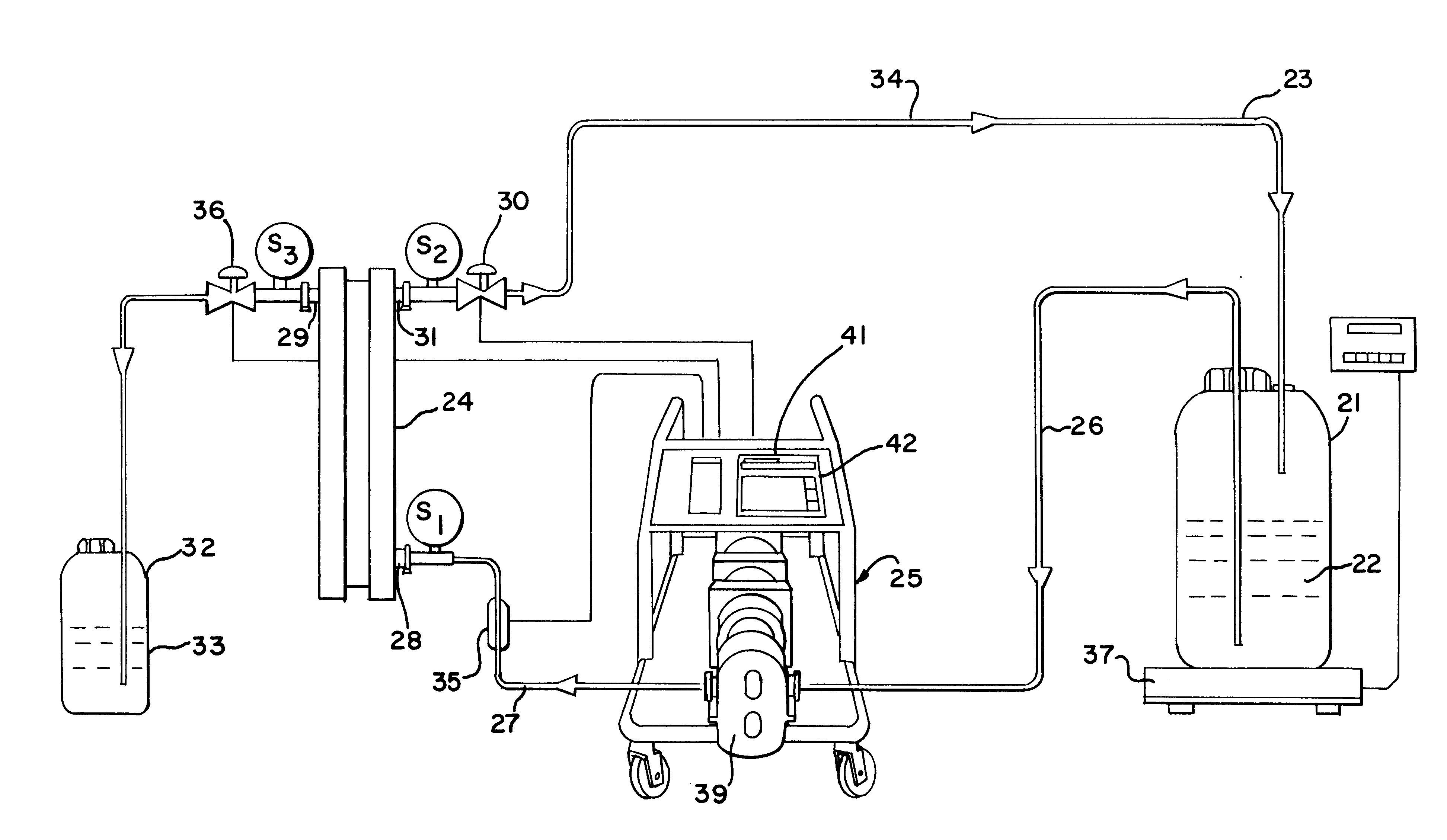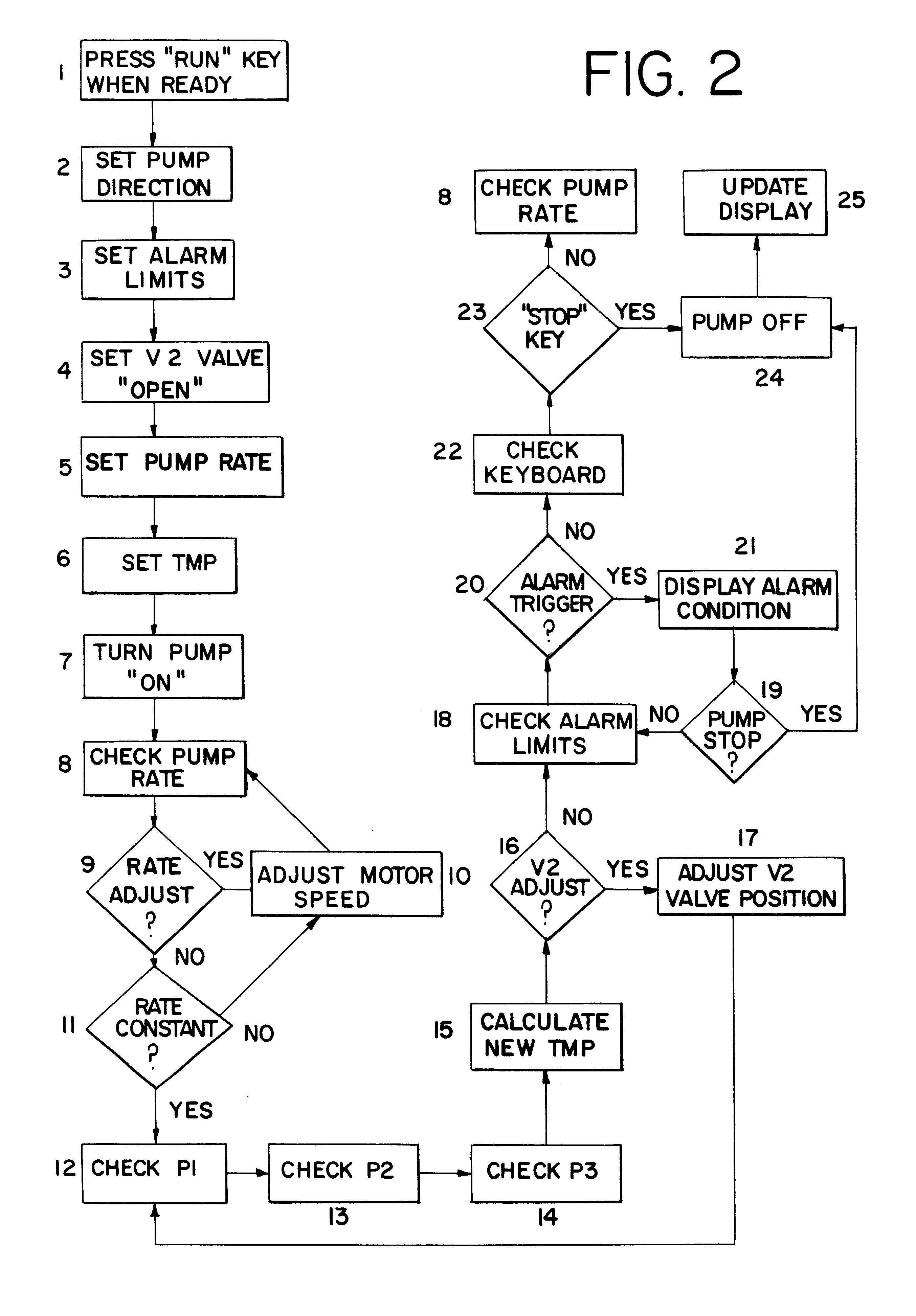Enhancing filtration yields in tangential flow filtration
- Summary
- Abstract
- Description
- Claims
- Application Information
AI Technical Summary
Benefits of technology
Problems solved by technology
Method used
Image
Examples
example 1
This example illustrates how the system was used to separate extracellular protein (IgG) from a suspension of cells. In this example, a 500 liter suspension of Chinese Hamster Ovary (CHO) cells was the process solution placed within the reservoir 21. The filtration system included a SciPro processor controlled pump unit having a peristaltic pumphead from Cole-Parmar, and an I / P High Precision pumphead. The filtration unit was a Sartocon II cross-flow filtration system available from Sartorius using a 0.45 micrometer Hydrosat cassette. The processor unit was set with the following operating conditions: the cell concentration within the 500 liter batch was 3.times.10 to the 6.sup.th cells / ml. The membrane surface area was 0.6 m.sup.2, with the cross-flow recirculation rate being 12 liters / min using a number 88 Masterflex.TM.. The inlet pressure (P1) was initially 10 psi; the retentate pressure (P2) was initially 5 psi; and the permeate pressure (P3) was initially 2.5 psi, achieved by ...
example 2
The 498 liters of media collected in Example 1 were subjected to a subsequent step of a multi-step separation strategy. The collected media containing the extra-cellular protein (IgG) was concentrated by ultrafiltration within the same type of system. The particular system also included a SciPro processor controlled pump unit of Scilog, Inc., having a Fristam Model 55S lobe pumphead. This system was used to concentrate the dilute protein solution from 498 liters to 2.0 liters, a concentration of approximately 250 times. The filtration system was a Sartocon II cross-flow filtration system using a 20000 MWCO "Ultrasart" cassette. The membrane surface area was 0.7 m.sup.2, the recirculation rate being 17 liters / min. The inlet pressure (P1) was 30 psi, the retentate pressure (P2) was 10 psi, and the permeate pressure (P3) was 0 psi. The trans-membrane pressure was constant at 20 psi during the 4.5 hour processing time.
With this tangential-flow filtration device, the protein remained in ...
PUM
| Property | Measurement | Unit |
|---|---|---|
| Pressure | aaaaa | aaaaa |
| Flow rate | aaaaa | aaaaa |
| Viscosity | aaaaa | aaaaa |
Abstract
Description
Claims
Application Information
 Login to View More
Login to View More - R&D
- Intellectual Property
- Life Sciences
- Materials
- Tech Scout
- Unparalleled Data Quality
- Higher Quality Content
- 60% Fewer Hallucinations
Browse by: Latest US Patents, China's latest patents, Technical Efficacy Thesaurus, Application Domain, Technology Topic, Popular Technical Reports.
© 2025 PatSnap. All rights reserved.Legal|Privacy policy|Modern Slavery Act Transparency Statement|Sitemap|About US| Contact US: help@patsnap.com



